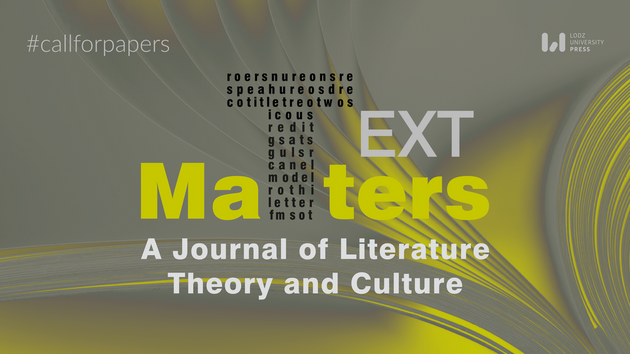Co-Editors of the issue:
Kateřina Kolářová, PhD (Charles University)
Katarzyna Ojrzyńska, PhD (University of Lodz)
“Intimacy is more than sex and romantic love. Intimacy is an ever-expanding universe composed of a myriad of heavenly bodies. Intimacy is about relationships within a person’s self, with others, with communities, with nature and beyond”—writes Alice Wong (10), who in her recent edited volume Disability Intimacy: Essays on Love, Care, and Desire creates a space where contributors offer insights into forty ways of looking at intimacy. Following Wong, we perceive intimacy as a quality that grows in various kinds of relationships and connections based on love, sex, desire, friendship, kinship, partnership, community, collegiality, or solidarity and often despite war, precarity, disposession, and other debilitating conditions.
We wish to keep expanding academic perspectives on intimacy and, particularly, crip and queer intimacy, including those offered by Hannah Quinn, Megan A. Johnson et al., Andrea García-Santesmases Fernández et al, and others. For this purpose, we want to focus on a diversity and plurality of experiences, aesthetics and ethics that go against the tides of “compulsory heterosexuality” (Rich), “compulsory able-bodiedness” (McRuer), and “compulsory able-mindedness” (Price) as well as against enforced politics of happiness (Ahmed).
Crip, as used in the title of the issue, refers to the reclaiming of the slur by members of disability/disabled communities as an act of pride. In this sense, the word shares the history of the term queer. Carrie Sandahl also notes that what both crip and queer, being “fluid and ever-changing, claimed by those whom [they] did not originally define” (27), have in common is a “radical stance toward concepts of normalcy; both argue adamantly against the compulsion to observe norms of all kinds (corporeal, mental, sexual, social, cultural, subcultural, etc.)” (26). Their transformative potential helps imagine the world otherwise. Hence, by focusing on the subversive and creative energies of crip and queer intimacies and their aesthetic and political dimensions, we wish to explore a wide range of affects, sensations, pleasures, and vulnerabilities, and the ways of embodying, knowing and understanding that they produce. We invite papers that approach crip and queer intimacies through the lens of disability studies, queer studies, women’s studies, race studies, and other minority studies. We are also open to posthumanist, new materialist, and other perspectives that help expand critical reflection on cultural texts, practices, and their contexts.
We believe these reflections should not center only on Western cultures and perspectives. Nor should they be limited to private spaces and personal relationships. Therefore, we also encourage explorations of communal intimacies, drawing on what Maria Törnqvist describes as “a sociality of closeness that is bound . . . to an inclusive relational infrastructure characterized by the strength of many weak ties” (273). Importantly, crip and queer intimacies extend beyond the (inter-)human realm. We thus especially welcome proposals that explore intimate forms of companionship with more-than-human partners, including non-human animals and objects which have traditionally been denied animacy and agency.
We invite scholarly contributions that center on cultural “texts” and practices that address crip and queer intimacies as a theme or which produce such forms of intimacy with or/and among readers, viewers, listeners, or those who experience cultural texts with their other senses. We are interested both in new works and in more traditional representations and genres, such as romance, confessional poetry, or classical portraiture. Our hope is that the 2026 issue of Text Matters will provide a platform for discussion on how various cultural and historical contexts, including non-Western ones, shape and influence crip and queer intimacies.
Potential topics include, but are not limited to, the following:
-
crip and queer sexualities;
-
crip and queer (self)care as intimacy;
-
crip and queer intimacies as a source of literary, cultural, and artistic innovation;
-
diaspora, refugee camps, and being in flight as sites and modes of attempting crip queer intimacies;
-
building crip queer intimacies across cultural, religious, political, ethnicized, racialized, and class divides;
-
crip and queer pleasure/bed artivism;
-
the role of intimacy in building queer-crip alliances;
-
queer and crip ecorelationality and more-than-human kinships;
-
digital connections: building queer and crip intimacies online;
-
communal/collective crip and queer intimacies;
-
non-Western perspectives on crip and queer intimacies;
-
institutional and systemic contexts within which queer and crip intimacies flourish;
-
intimacies in queer and crip life-writing;
-
potential, utopian and dystopian visions of queer and crip intimacies;
-
access intimacy;
-
obstacles to building queer and crip intimacies;
-
failed queer and crip intimacies.
An abstract [max. 500 words] should be submitted as an email attachment to: textmatters2026@gmail.com and text.matters@uni.lodz.pl
In your email, please include your name, affiliation, email address, the title of the proposal, abstract, 5 keywords, and a brief bio note.
Important deadlines:
Deadline for submission of article proposal (max. 500 words): 31 January 2025
Deadline for editors’ acceptance/rejection of proposals: 7 March 2025
Deadline for submission of full articles (max. 6000 words): 7 September 2025
Deadline for peer review and final acceptance/rejection of articles: 1 December 2025
Deadline for submission of final versions of articles: 1 February 2026
Bibliography:

